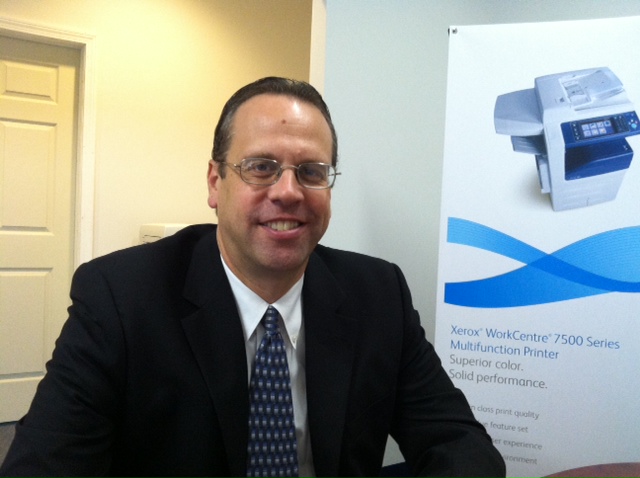
By Maureen Werther
Just as most people have made the transition from cell phones to smartphones, businesses looking to streamline and improve workflow, improves efficiencies, reduce their carbon footprint and save money are also opting for MFPs – multi-function printers – for their businesses.
One of the most important features of MFPs is their ability to interface with remote devices and process and share information more rapidly.
“Many of today’s workers don’t operate from 9 to 5 out of a cubicle, attached to their computers,” said Rick Gallup, owner of Document Solutions of the North Country. People are on the move or working from home and they need the connectivity that an MFP provides.
According to Gallup, there are many models of MFPs that allow an employee to fax or scan directly from their mobile device or tablet. They are also capable of connecting to the cloud and sharing information with other team members. Other features include the ability to print from or scan to commonly used sites such as Google Drive, Microsoft 365 and DropBox, to name a few.
“There are a number of apps available that can be downloaded onto the client’s MFP, offering a variety of functions and features designed to multiply productivity,” said Gallup.
In businesses where enhanced security is critical, embedded apps in MFPs can improve security and provide increased safeguards against unwanted hacking, theft of information or dangerous viruses. The additional security features support WiFi connections and negate the necessity of having to connect to a network.
Some manufacturers offer translation capabilities. This is an especially valuable tool for companies doing business with global partners. Employees can scan a document into the MFP and receive a translated version within minutes.
Other MFPs have features that allow business owners to better monitor their usage of energy and paper. Some MFPs offer reduced power consumption and provide regular assessments of usage and paper consumption.
Tim Seeley of Seeley Office Systems agrees that MFPs can reduce costs and increase efficiencies, in terms of both energy and materials consumption as well as employee productivity.
“Printers are often one of the most expensive devices in an office,” he said. By allowing all print work to be channeled through one MFP, clients can cut down on costs associated with having multiple small printers located throughout an office.
Many MFPs are equipped with monitoring software, so clients will know in advance when they are getting low on supplies, the number of copies being made, and when it’s time to perform routine service and maintenance.
Seeley noted that many office equipment suppliers also fill the important role of document storage and management for their clients. By having the lion’s share of scanning, printing and sharing documents on one MFP, document creation can be tracked more efficiently and storage or disposal is also streamlined.
Another popular feature of MFPs is their online training, support and troubleshooting embedded directly into the device and accessible at the push of a button on the front panel. With training and help videos embedded in the machine, costly down times and in-person service calls can often be avoided.
While MFP’s are often one of the more expensive devices a company can purchase or lease, their cost-saving and efficiency-improving capabilities can translate to considerable savings down the road for business owners.
